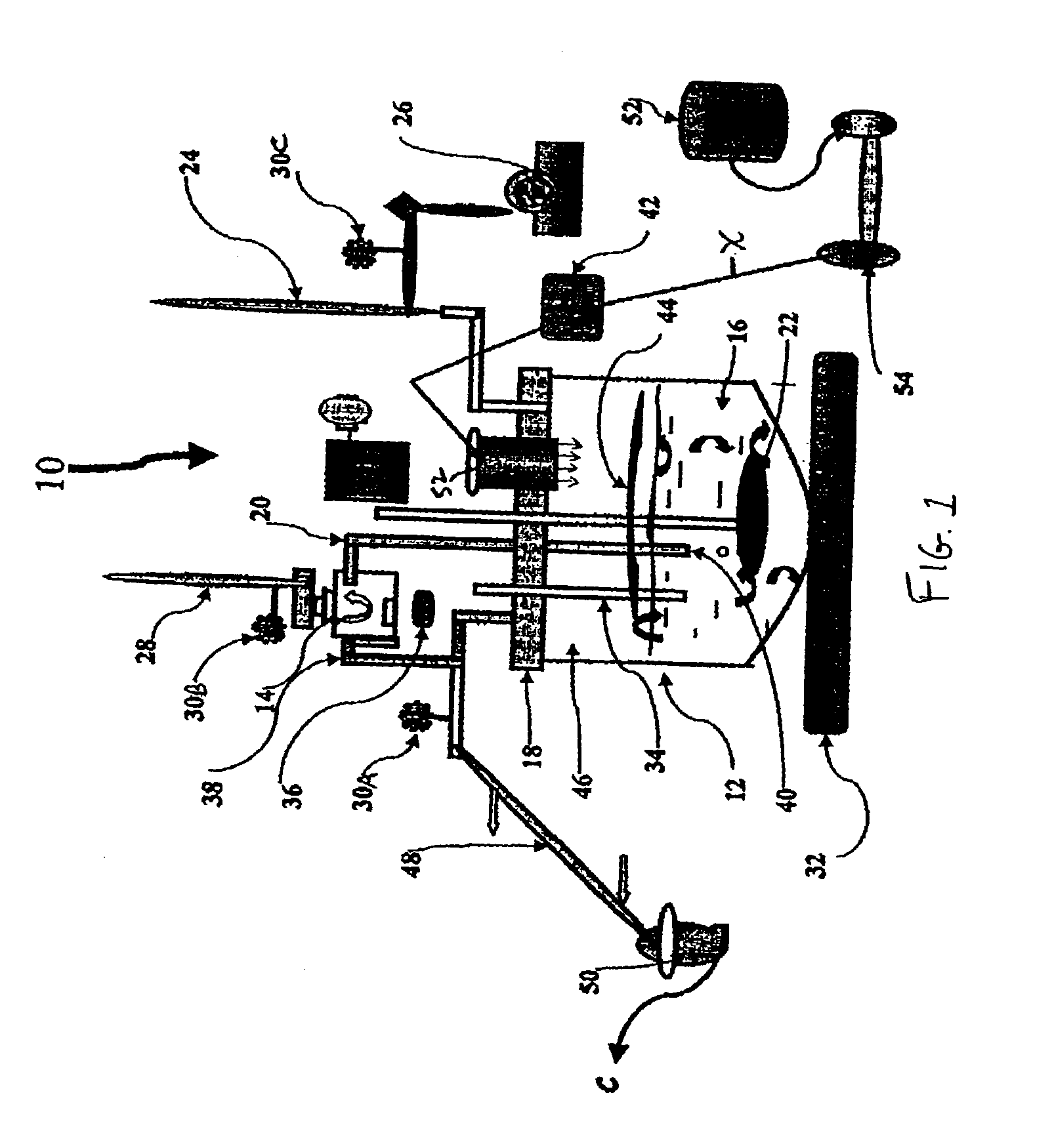Hydrophilic complexes of lipophilic materials and an apparatus and method for their production
a technology of lipophilic materials and hydrophilic complexes, which is applied in the field of inclusion complexes, can solve the problems of hindering the development of therapeutic agents, affecting the development of drugs, and affecting the solubility of water, so as to achieve the effect of easy and rapid access to specific areas of the body, high purity, and high uniformity of emulsions
- Summary
- Abstract
- Description
- Claims
- Application Information
AI Technical Summary
Benefits of technology
Problems solved by technology
Method used
Image
Examples
examples
Experimental Procedure for the Production of the Inclusion Complex
1. Preparation of Polymer Solution.
500 ml of distilled water are transferred from distilled water vessel 52 to polymer vessel 54. To polymer vessel 54 is added an estimated quantity of polymer, which was chosen for creation of Inclusion Complex with lipophilic compound. At temp. 20-25° C. the contents of polymer vessel 54 is mixed at velocity of 30-60 min−1 (rotation / min). up to complete dissolution of the polymer and creation of transparent or opalescent solution.
2. Loading Compounds in the Reactor.
The polymer solution, prepared in polymer vessel 54 is transferred into first vessel 12 by pump 42. In the same vessel the carrier solvent is loaded. Lipophilic compound is placed into second vessel 14.
3. Starting the Reactor.
The nano-disperser 22 is activated at velocity 500-800 min−1. The cooling water is entered into first and second condensers 24 and 28. The heater (thermostat) 32 is activated for temperature 5-10° C. ...
PUM
| Property | Measurement | Unit |
|---|---|---|
| size | aaaaa | aaaaa |
| sizes | aaaaa | aaaaa |
| size | aaaaa | aaaaa |
Abstract
Description
Claims
Application Information
 Login to View More
Login to View More - R&D
- Intellectual Property
- Life Sciences
- Materials
- Tech Scout
- Unparalleled Data Quality
- Higher Quality Content
- 60% Fewer Hallucinations
Browse by: Latest US Patents, China's latest patents, Technical Efficacy Thesaurus, Application Domain, Technology Topic, Popular Technical Reports.
© 2025 PatSnap. All rights reserved.Legal|Privacy policy|Modern Slavery Act Transparency Statement|Sitemap|About US| Contact US: help@patsnap.com


